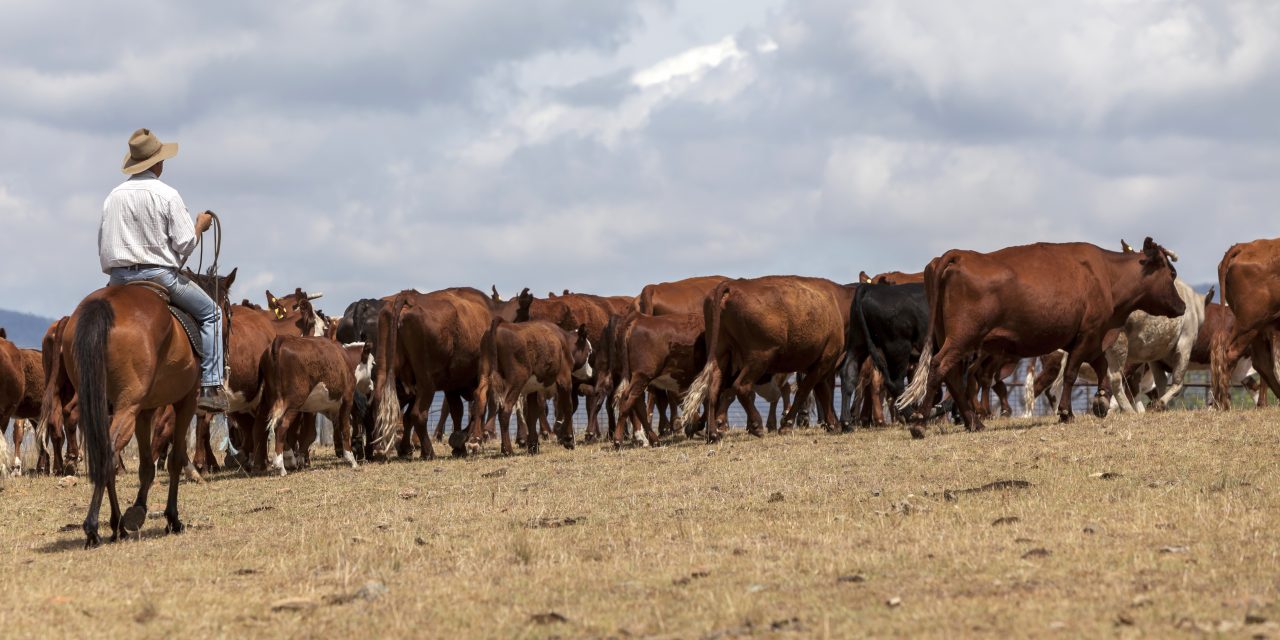Farmers oppose BLM proposal fearing unintended consequences on rural communities
By Ching Lee
California Farm Bureau Federation
CALIFORNIA — Ranchers, foresters and others who use public lands have urged the Bureau of Land Management to withdraw a proposed rule they fear would radically restrict activities such as grazing and timber harvesting in favor of conservation as the predominant land management priority.
If the rule is implemented in its current form, agricultural users of public lands say it would have wide-ranging impacts on rural businesses and communities, with unintended consequences on the more than 245 million acres of public lands — located primarily in 12 western states — that BLM manages.
Those who hold permits on federal lands also say they were blindsided by the proposal, which the U.S. Department of the Interior unveiled in late March with no stakeholder discussion or advance notice that it was developing the rule. The public was initially given 75 days to comment on the proposed BLM Conservation and Landscape Health rule, but the department later extended the deadline to July 5.
Now that the department is reviewing stakeholder comments, opponents of the proposed rule say they hope their concerns will send BLM back to the drawing board.
The department said the proposed plan is meant to address a current gap in BLM regulations that “directly promote conservation efforts for all resources … so that conservation is applied more broadly across the landscape to all program areas.” It characterized the proposal as a tool for BLM to respond to pressures from climate change, including wildfires, droughts and severe storms across the West.
The proposed rule includes three major changes to how public lands are currently managed: It would add conservation as a land-use category and allow BLM to issue conservation leases for “restoration or land enhancement” or for mitigation. It would also expand the identification and designation of Areas of Critical Environmental Concern. In addition, it would apply land health standards to all BLM-managed lands; currently, BLM only uses those standards to evaluate grazing permits.
BLM said the proposal does not change its multiple-use mandate, adding that grazing, timber, mining, energy development, recreation and other uses will continue. The agency also maintains that the proposed rule “does not elevate conservation above other uses” but rather puts conservation “on an equal footing with other uses.”
Furthermore, it said conservation leases would “generally be a compatible use” with grazing allotments that meet land health standards and that the new rule would allow ranchers with grazing permits opportunities to enter into a conservation lease to improve land health.
But Modoc County rancher Sean Curtis, who also works as the county’s planning director, said BLM’s proposal does not address how it would manage conflicting goals. For example, he said he wondered what would happen if an environmental group wanted to fence off a piece of ground for restoration but the same ground already had a grazing permit on it.
“How do you facilitate that?” he asked. “You’re creating a conflict there that doesn’t exist today.”
BLM acknowledged that uses deemed incompatible with conservation activities would not be allowed during the term of a conservation lease, though it’s unclear if those lands would then be available for other uses after the lease ends. Under the proposal, conservation leases could be extended after an initial maximum term of 10 years.
Opponents of the proposed rule point out that historically, federal lands that have been designated for conservation protections largely are not managed for other purposes. They say they’re concerned that if BLM were to issue conservation leases or expand designation of Areas of Critical Environmental Concern to large swaths of land, that activities such as grazing and logging would be prohibited on those lands indefinitely.
In a letter to the Department of the Interior, a coalition of agricultural groups, including the California Farm Bureau, said BLM defines conservation so broadly throughout the proposed rule that it establishes internal conflict with other programs and creates unnecessary conflict among users of public lands.
“The proposed rule clearly contemplates, and the agency has confirmed, that the compatibility assessment under the proposed conservation leasing system will necessarily require the agency to pick winners and losers in the existing land management structure,” the groups said.
The coalition also voiced objections to BLM’s attempt to create new uses of public lands under the Federal Lands Policy and Management Act, or FLPMA. Congress, not BLM, the groups said, has primary authority to manage and create uses on public lands. The coalition further pointed out that Congress did not authorize elevating conservation activities as a “use” covered by FLPMA.
“There are red flags both in policy and process from BLM,” said American Farm Bureau President Zippy Duvall.
BLM held five public meetings on the proposed rule, two of which were virtual, including in California. In a letter to BLM, California Farm Bureau President Jamie Johansson called the sessions “deficient” because “they lacked meaningful dialogue,” noting that BLM could not answer many questions related to the rule’s implementation.
Johansson’s letter urged BLM to scrap the proposed rule and start over, “this time engaging with stakeholders in a forum that would promote open dialogue.”
Legislation has been introduced in the House requiring BLM to withdraw the rule. H.R. 3397 would also prevent BLM from issuing a similar rule in the future. An identical bill, SB 1435, was introduced in the Senate.
Rancher Curtis, who also serves as president of Modoc County Farm Bureau, said BLM’s proposals are of such magnitude that they should be vetted through an environmental impact statement rather than introduced as simply a rule change. He said the proposed changes could have significant economic, social and cultural impacts in rural communities such as Modoc County, which relies heavily on public lands for grazing and forestry activities.
“It’s a big deal,” he said. “We’re surrounded by the forest. It’s an integral part of our local economic stability. Our economy is dependent to a great extent on the decisions that the agencies make on how they manage their ground, or in some cases the decisions they don’t make.”
If the proposed rule is adopted, it is widely expected that BLM will face legal challenges. By creating conflict between multiple uses and among existing statutes, the agricultural coalition in its letter said BLM “has proposed a system where litigation is inevitable.”
Conflicts that could arise between conservation lease holders and other permittees would certainly result in litigation, Curtis said. He noted several attorneys general from western states have already said they would sue.
If BLM chooses not to withdraw the rule, he said, “at least stop the process and have some additional discussion.”












